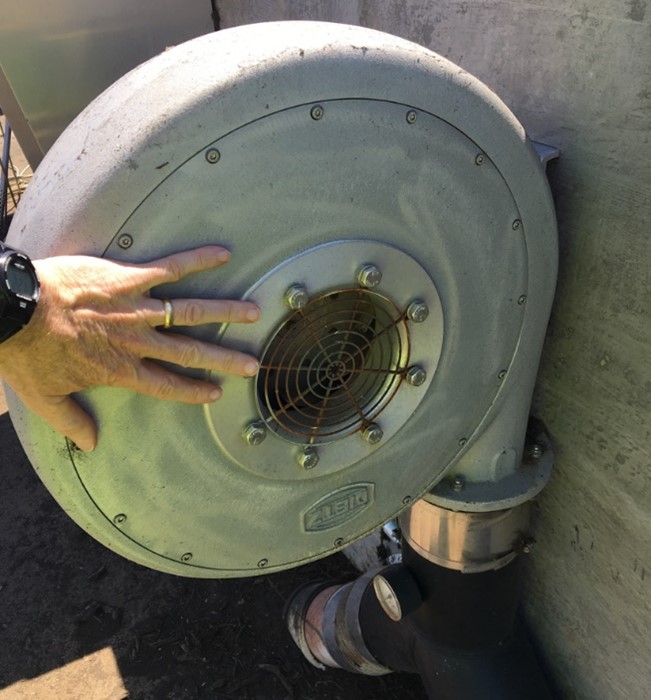The primary goal in composting is to make stable compost that doesn’t cause odor problems while composting or afterwards, nor will it inhibit plant growth or leach excessive nutrients when applied. The faster compost is stabilized the more material can be processed per unit area. For most composting facilities, time and space is money and managing environmental risks is paramount. Therefore, the hallmark of efficient composting is the rapid and predictable stabilization of the incoming feedstocks.
The direct measure of stability (TMECC 03.08B) is either the rate of O2 uptake or the rate of CO2 generation at standard test conditions. The Solvita CO2 Index is a method of assessing stability by measuring the rate of CO2 generation. The measurement range is from 1 (highly unstable) to 8 (fully stabilized). A CO2 index of 3 is common for raw feedstocks. Compost with an index of 5 is modestly stabilized and, if not inhibited by a pH less than 6.5 (ref 1,2), and is generally ready for curing without fear of creating odors. By the time compost reaches an CO2 index of 6 the bio-oxidation potential is very low and further active management is rarely necessary or worthwhile. The time to achieve different Solivita CO2 indexes and pH levels is thus a direct way to measure the rate of stabilization; An efficient active composting process produces compost with a Solvita CO2 index >5 and a pH above 6.5 quickly.
ECS has the good fortune to work with many large-scale composters across North America. Some have our systems and others have hired us to perform process audits on their facilities to help them improve performance. In 2023 we had the opportunity to take a deep dive into two very different facilities. Facility A had odor issues during curing phase after active composting. Facility B was preparing for a critical source test of their VOC emissions and wanted to make sure they would comply with their permit. The two facilities composted similar mixes of green waste + food waste that complied with USCC BMP standards, and both conducted active phase composting in automatically controlled forced-aeration outdoor systems. We instructed both facility staff on how to measure a comprehensive list of process conditions and product quality metrics during and after active phase composting. Here is the summary of their findings.
Facility B is achieving a CO2 index of > 5 in less than 20 days, something that Facility A cannot do in 40 days. Facility B is not having any odour issues from either their active or curing phase composting. In short, Facility B is far more efficient at creating stable compost than Facility A.


Repeated publications in peer-reviewed journals have demonstrated the positive correlation between composting efficiency and composting process conditions – specifically temperature, oxygen availability, and pH. These findings have shown that, assuming a reasonable feedstock mix, strong aeration during active phase composting overcomes the inhibiting factors of low pH, excessive temperatures, and low available oxygen (ref 1, 2, 3, 4, 5). These process conditions produce highly efficient composting characterized by fast stabilization and low air emissions.
The data summarized in Tables 1 and 2 is consistent with the findings of the journal articles referenced above. The aeration system at Facility B generates four times the peak airflow and 11 times the average airflow of the system at Facility A. The effects of optimized versus inadequate aeration are clear in the differences between the process conditions (average temperatures and oxygen levels) and the resulting composting efficiencies.
The advantages of highly efficient composting are many. A facility with a smaller footprint requires less material movement and less labor. For paved facilities with forced aeration, it will have lower CAPEX/ton development costs. It will also require a smaller surface water management system. Optimized process conditions also provide a host of benefits, including lower volumes of unstable material on-site, lower generation of odors and VOCs, more secure air permit compliance, reduced or eliminated costs associated with enclosing the process in buildings or under fabric covers, and a more stable final product.